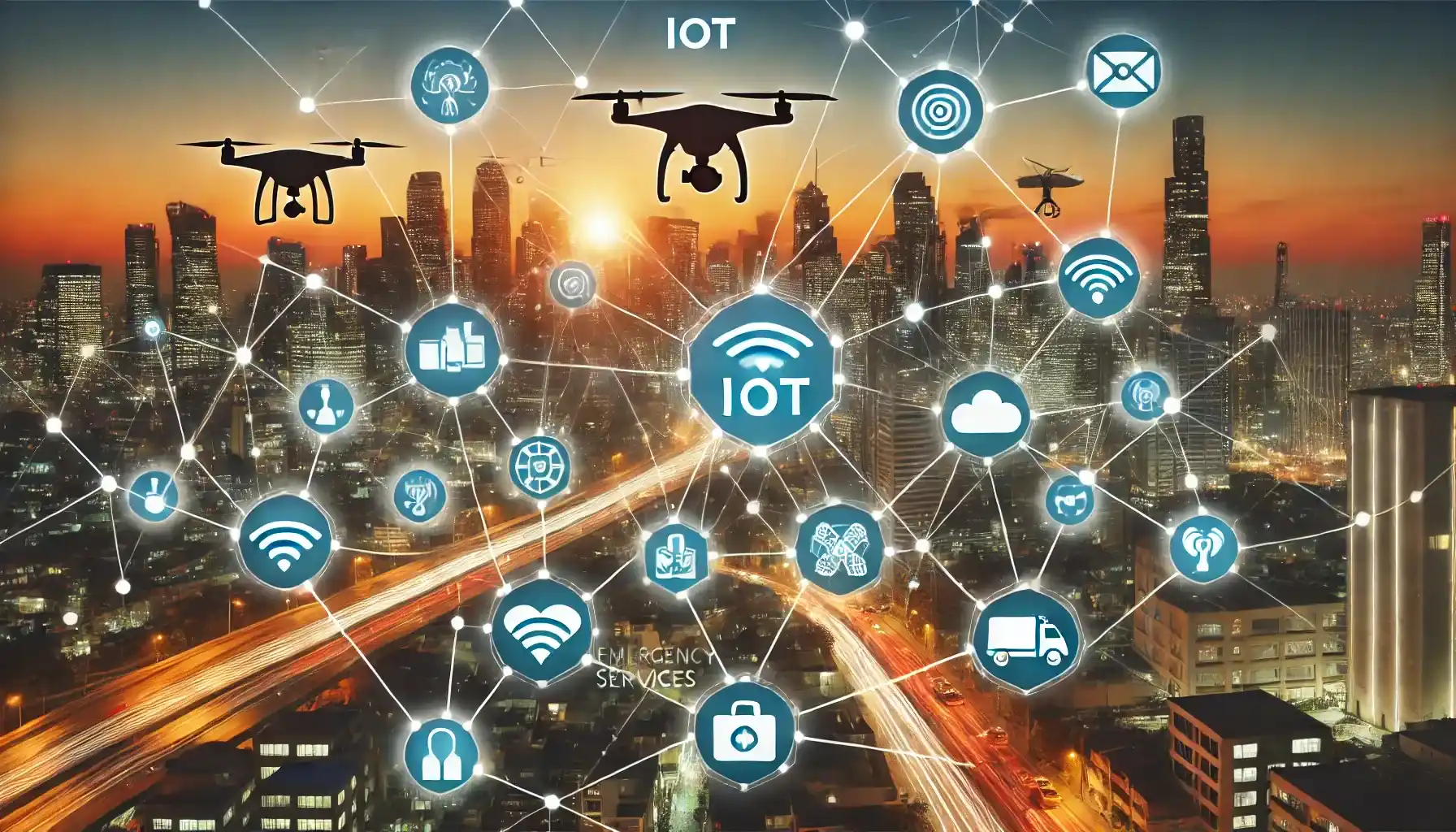Table of Contents
In today’s digital age, IoT on Public Safety is transforming how we protect cities and communities. By connecting devices and systems, IoT enables seamless communication and smarter, more efficient safety solutions. From advanced surveillance cameras to integrated emergency response systems, IoT on Public Safety is reshaping safety strategies.
This article explores the latest trends in IoT on Public Safety, highlighting innovative technologies that are enhancing security and making our world safer than ever.
1. Real-Time Data and Analytics
- One of the most impactful trends in the IoT on Public Safety market is the emphasis on real-time data and analytics.
- IoT-enabled devices, such as sensors and smart cameras, gather vast amounts of data from multiple sources. This data is analyzed in real-time, equipping law enforcement and emergency responders with actionable insights to make informed decisions quickly.
- For instance, smart surveillance cameras can detect unusual activity and immediately alert authorities. These real-time analytics support proactive decision-making, enabling faster, more effective responses to incidents.
2. Integration of AI and Machine Learning in IoT on Public Safety
- The integration of Artificial Intelligence (AI) and Machine Learning (ML) is another major trend in the IoT on Public Safety landscape.
- AI algorithms can analyze massive datasets to spot patterns and predict potential security threats. Machine learning models, by learning from historical data, enhance the accuracy of predictive analytics.
- This can include predicting maintenance needs for safety equipment to prevent malfunctions. AI and ML technologies are significantly improving the efficiency and effectiveness of public safety operations.

3. Smart Surveillance and Facial Recognition
- IoT-powered smart surveillance systems are playing a central role in modern public safety initiatives. These systems use IoT-connected cameras equipped with facial recognition to boost security.
- Smart surveillance can identify and track individuals in crowded areas, providing alerts for potential threats or persons of interest.
- Moreover, these IoT-enabled cameras can integrate with drones and body cams worn by law enforcement, offering real-time situational awareness to authorities.
4. Emergency Response Optimization
- IoT is revolutionizing emergency response systems by optimizing how responders locate and assist those in distress.
- IoT devices such as GPS-enabled smartphones and wearables allow for precise location tracking, enabling faster dispatch of emergency services.
- IoT-powered platforms can also automate tasks like dispatching ambulances or coordinating with fire departments, reducing response times and saving lives.
5. Environmental Monitoring and Disaster Management
- Environmental monitoring via IoT devices is becoming a key component of public safety, particularly for disaster management.
- IoT sensors play a vital role in monitoring environmental conditions, such as air quality, water levels, and seismic activity.
- By providing real-time data, these sensors can deliver early warnings for natural disasters, including floods, earthquakes, and wildfires, enabling timely responses to mitigate their impact.
- This real-time data enables better decision-making for evacuations, resource deployment, and disaster preparedness, ultimately reducing the impact on communities.
6. Cybersecurity for IoT Devices
- As the use of IoT devices in public safety grows, cybersecurity has become a top priority.
- IoT devices are vulnerable to cyberattacks, which can compromise sensitive data and disrupt operations. There’s increasing focus on implementing robust cybersecurity measures like encryption, authentication protocols, and regular security updates to protect IoT networks.
- Public safety agencies are investing heavily in these solutions to ensure the integrity and confidentiality of their IoT systems.
7. Smart City Initiatives
- IoT on Public Safety is closely linked with broader smart city initiatives. Cities worldwide are using IoT technologies to create safer, more efficient urban environments.
- From smart streetlights that respond to pedestrian activity to connected traffic management systems that improve traffic flow, IoT is transforming how cities manage public safety.
- These smart city solutions enhance emergency response times, improve surveillance, and contribute to creating safer public spaces for residents.

FAQs
1. How is IoT Used in Public Safety?
- The Internet of Things (IoT) plays a crucial role in enhancing public safety. IoT sensors embedded in buildings can swiftly detect fires, gas leaks, or unauthorized intrusions, automatically alerting emergency services for a rapid response.
- Additionally, advancements in facial recognition technology significantly bolster public safety surveillance systems, enabling authorities to identify potential threats more effectively.
2. How Does IoT Improve Safety and Security?
- IoT significantly enhances safety and security in various settings, particularly in the workplace. By providing real-time monitoring and alerts.
- IoT facilitates predictive maintenance, tracks employee movements, ensures compliance with safety regulations, and boosts operational efficiency. These capabilities collectively create a safer environment for workers and the public.
3. How is IoT on Public Safety Used in Public Transportation?
- IoT is revolutionizing public transportation by enhancing operational efficiency and ensuring safety. For instance, IoT technology can be integrated into steering wheel control systems to monitor driving behavior closely.
- Additionally, IoT systems can provide alerts to drivers or their supervisors if speed limits are exceeded, thereby promoting safer driving practices and reducing the risk of accidents. Overall, the implementation of IoT in public transportation significantly contributes to a safer and more efficient travel experience for all.
Conclusion
The integration of IoT on public safety is paving the way for transformative advancements across various sectors, particularly in public transportation. By leveraging IoT technology, organizations can enhance operational efficiency while significantly improving safety protocols. The ability to monitor driving behaviors, track compliance with regulations, and provide real-time alerts not only fosters safer environments for both drivers and passengers but also contributes to overall community safety.





